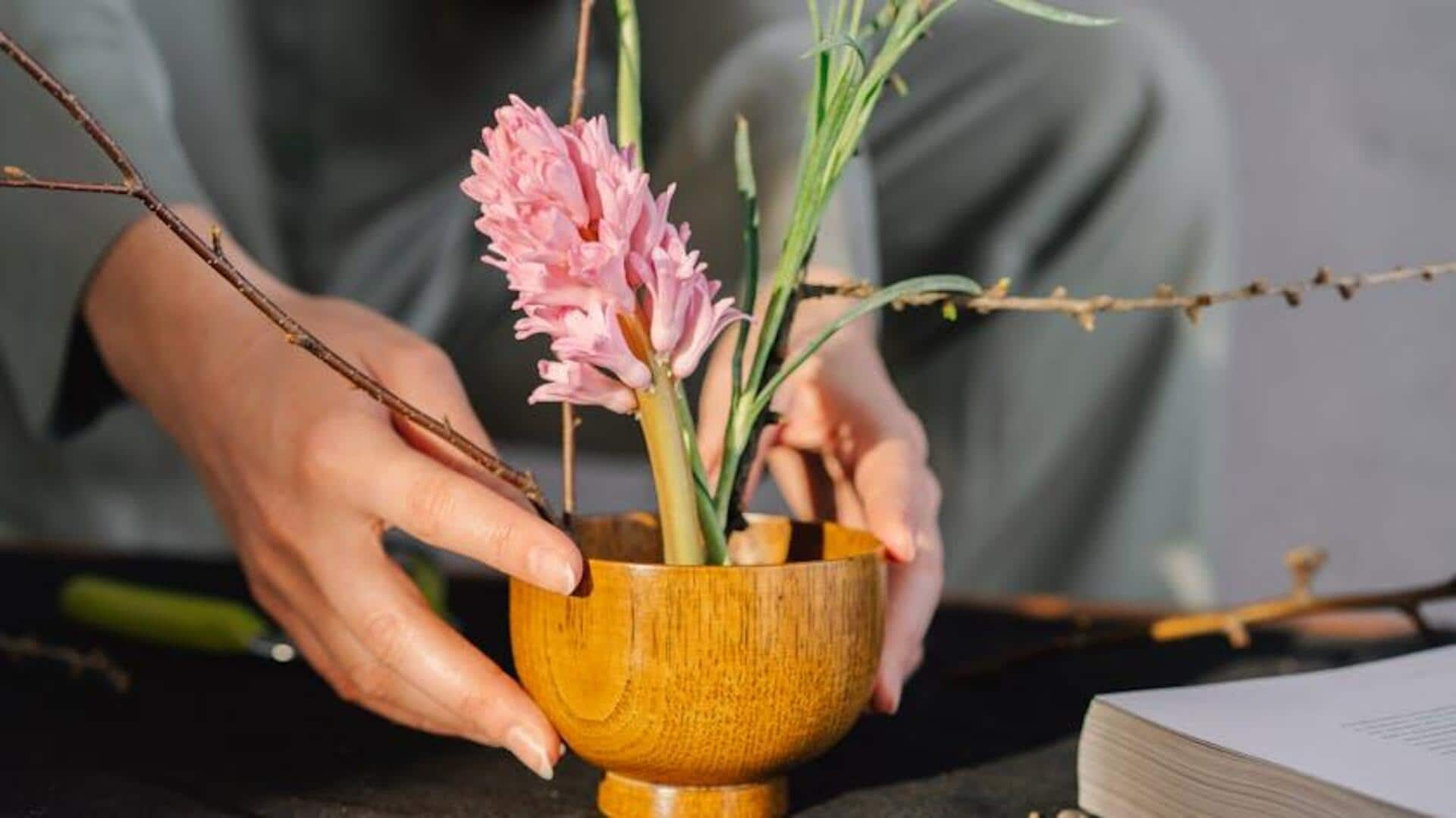
Ikebana: The Japanese art of floral arrangements
What's the story
The traditional Japanese art of flower arrangement, ikebana, focuses on the principles of harmony, balance, and simplicity. Unlike standard floral arrangements that emphasize color and volume, ikebana accentuates the beauty of every element. This centuries-old art is not only about flower arrangements but also about bridging the gap between nature and humankind. It promotes awareness and appreciation towards nature with its structured yet creative approach.
Origins
Historical roots of ikebana
Ikebana traces its roots back to rituals from the sixth century. Originally, it was employed as offerings but grew into a sophisticated art form over centuries. Different schools of thought shaped the practice, adding their own unique styles and philosophies. Knowing these roots helps in understanding how ikebana became an inseparable part of Japanese culture.
Core concepts
Principles guiding ikebana
The principles of ikebana are all about balance, harmony, and minimalism. Arrangements typically have an element of asymmetry, to add dynamic tension. They keep elements like line, space, and form in balance with each other. The use of negative space is important. It highlights the beauty of individual components without overpowering them with excess.
Essential equipment
Tools used in ikebana
Practitioners use specific tools like kenzan (needle-point holders) to hold stems in place within containers known as vases or suiban (shallow bowls). Scissors intended for cutting plant material are also a must for making clean cuts when trimming during arrangements. These tools assist in achieving desired shapes while maintaining plant integrity throughout creation processes.
Contemporary styles
Modern adaptations in ikebana
While traditional methods remain popular today among enthusiasts worldwide who appreciate their timeless elegance, modern adaptations have emerged. These incorporate new materials like wire mesh alongside unconventional objects such as driftwood or stones. They reflect contemporary aesthetics without losing touch with core values inherent within this ancient craft form itself!